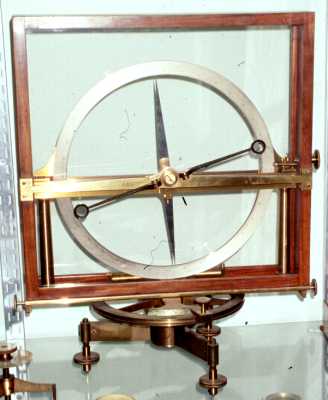
|
The dip needle (or inclination compass) at
the left was purchased from Ruhmkorff of Paris, probably in 1875, for Vanderbilt
University. It is now on display in the Garland Collection of Classical
Physics Apparatus at Vanderbilt.
"In carrying out a measurement one sets the needle in
the magnetic meridian by turning the support until the needle is vertical,
in which case the needle is in a magnetic East-West plane, and then turns
the support exactly 90°, at which point the vertical scale circling
the needle is in the magnetic meridian. Thereupon the angle the needle makes
with the horizontal is the angle of inclination. ... The horizontal circular
scale is marked off in half degrees. The associated vernier allows readings
to one minute. The vertical scale is marked off in ten-minute intervals."
(From Robert A. Lagemann, The Garland Collection of Classical Physics Apparatus
at Vanderbilt University (Folio Publishers, Nashville, TN, 1983) pg 152)
|